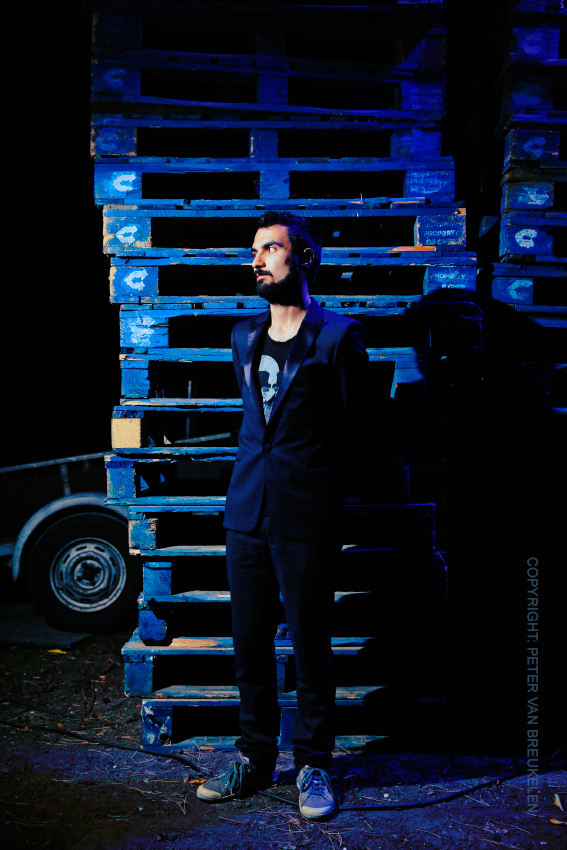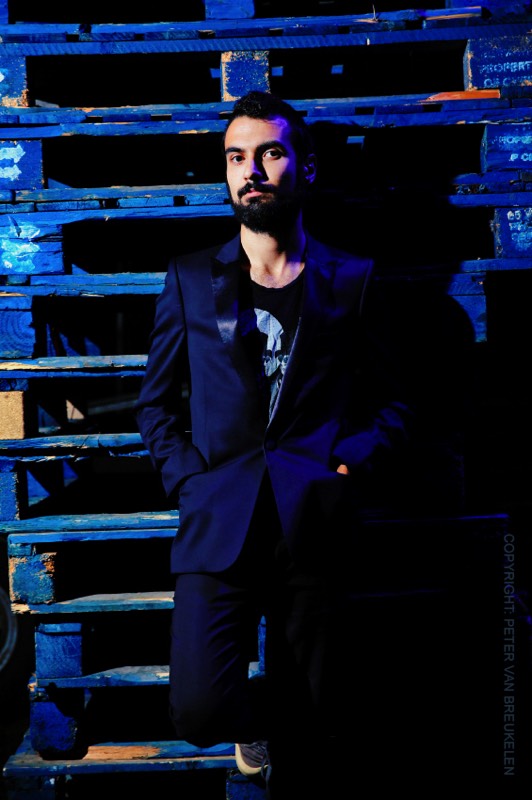Music Articles
Peter van Breukelen Photographer
Tigran Hamasyan's holy grail
Words: Mischa Andriessen, Photography: Peter van Breukelen. Published: Aug. 28th, 2013
The French artist Yves Klein used this story to counter journalists that wanted to know why his paintings only had one colour and the same colour moreover. By comparing himself with a Japanese monk, Klein could successfully suggest that his work was elevated and, at the same time appeal to the idea that there is a truth in art, that there are right notes and wrong ones, that there even is something like a holy grail; the one note that shadows all others.
Not many people believe such absolute do's and don'ts in the arts exist. Still many artists are being blamed for not being consistent; as if for them there would exist a direction that needs to be followed, no detours allowed. Keith Jarrett once said in that respect: ‘It seems that critics tend to forget that the musician is human.’ For Jarrett the detours are just as important. Unpredictable fickleness maybe is the essence of jazz. Louis Armstrong put it this way: ‘Jazz is only what you are.’ The musician is what he plays. His playing reflects his personality and personalities are (unfortunately maybe but they are) not that consistent.
The Armenian piano player Tigran Hamasyan recently was artist-in-residence at the Jazz Middelheim Festival in Antwerp. He played there three days in a row with very varied line-ups and provoked very varied reactions. An often heard criticism was a lack of consistence. Hamasyan fluttered in many directions, mixed jazz with heavy metal, Armenian folk music with hip hop, and seemed to be influenced by Schubert and Debussy as by Pink Floyd as well. And why did this brilliant piano player (on that the majority agreed) not simply stick to playing the piano? What was this goofing around with effects and electronics about? And why did he have to sing and do some human beat boxing?
For the people that already knew the work of this young Armenian, this eagerness could hardly come as a surprise. All his records contain music that stems from an utterly flexible mind, even his most introvert record
“A Fable” from 2011. On “Red Hail” its precursor there seems to appear a different band with each song. In some songs a familiarity comes to light with saxophone player David Binney, whose first records also showed influences from many different genres as well as an overload of ideas. Nowadays Binney is one of the most interesting characters in modern jazz, he is twice as old as Tigran Hamasyan.
An old jazz cliché goes: ‘You gotta live the music in order to play it. You have to live, grow, fail and start again. You have to find yourself as another cliché says. Not many companies do not alter their working processes every year, everything is changing constantly and the last thing we want from a musician, is that he puts on the shoes of his mentor and starts walking.
With Tigran Hamasyan jazz again has a character in the house, someone that has as much courage as he is gifted. Virtuosity is a pitfall, always. You do not have to do what you can do. You do not have to listen to people that tell you that you do not have to do what you can do. Maybe one note is the best of all, maybe they are all as good. Discover and learn, if you have the guts to investigate it all, you might find something special, who knows?
They say kill your darlings, but what if you just like Hamasyan love jazz, and Armenian folk music, and metal, and classical music, and hip hop and lots more? Should you then choose immediately or do you have the opportunity to try bringing them all together? Jazz and freedom are often mentioned in the same sentence, but apparently there are many unspoken restrictions within the genre.
I do not think that every note Tigran Hamasyan plays, is marvellous. One second his playing blows me away, the next moment I might be completely lost. Partly because of that I consider him to be an enormous
promise. His ability is remarkable, but not what sets him apart from the rest. Many know how to play in jazz, are able to perform incredible stunts on their instruments. Bad jazz, meaning poorly performed jazz is seldom heard nowadays. The playing level is unbelievably high. Compare that to pop music where a handful chords is often all that is offered. A Dutch writer and music journalist once said to me, he understood that I said goodbye to pop and preferred the content of jazz, ‘But what about the excitement?’ he asked. Point taken. A lot of jazz is good, very good indeed, but does it excite a lot?
The music of Hamasyan is exciting, partly because of the elements and effects he borrowed from pop and rock. It is music with a large emotional reach. From small, vulnerable and almost kitschy romantic to rough and muscular. Plus anything in between, some of which in my opinion would not harm to get rid of. The new single “Road Song” shows that Hamasyan has not reached the end of his way by far and that he apparently does not want to be less greedy yet. That seems good news to me. Because that swirling maelstrom of ideas contains a many good ideas and more than that, contains a promise, knowingly a music that once when all clichés, ideas, whims and jokes have lived through, will sound like nothing else, that will be the music then that will correspond wiith the man that brought about that music, a young man, who returned to Armenia in order to take care of his old grandmother; Tigran Hamasyan.
The music of Hamasyan is exciting, partly because of the elements and effects he borrowed from pop and rock. It is music with a large emotional reach. From small, vulnerable and almost kitschy romantic to rough and muscular. Plus anything in between, some of which in my opinion would not harm to get rid of. The new single “Road Song” shows that Hamasyan has not reached the end of his way by far and that he apparently does not want to be less greedy yet. That seems good news to me. Because that swirling maelstrom of ideas contains a many good ideas and more than that, contains a promise, knowingly a music that once when all clichés, ideas, whims and jokes have lived through, will sound like nothing else, that will be the music then that will correspond wiith the man that brought about that music, a young man, who returned to Armenia in order to take care of his old grandmother; Tigran Hamasyan.
Listen to some of Tigrans music through Spotify:

